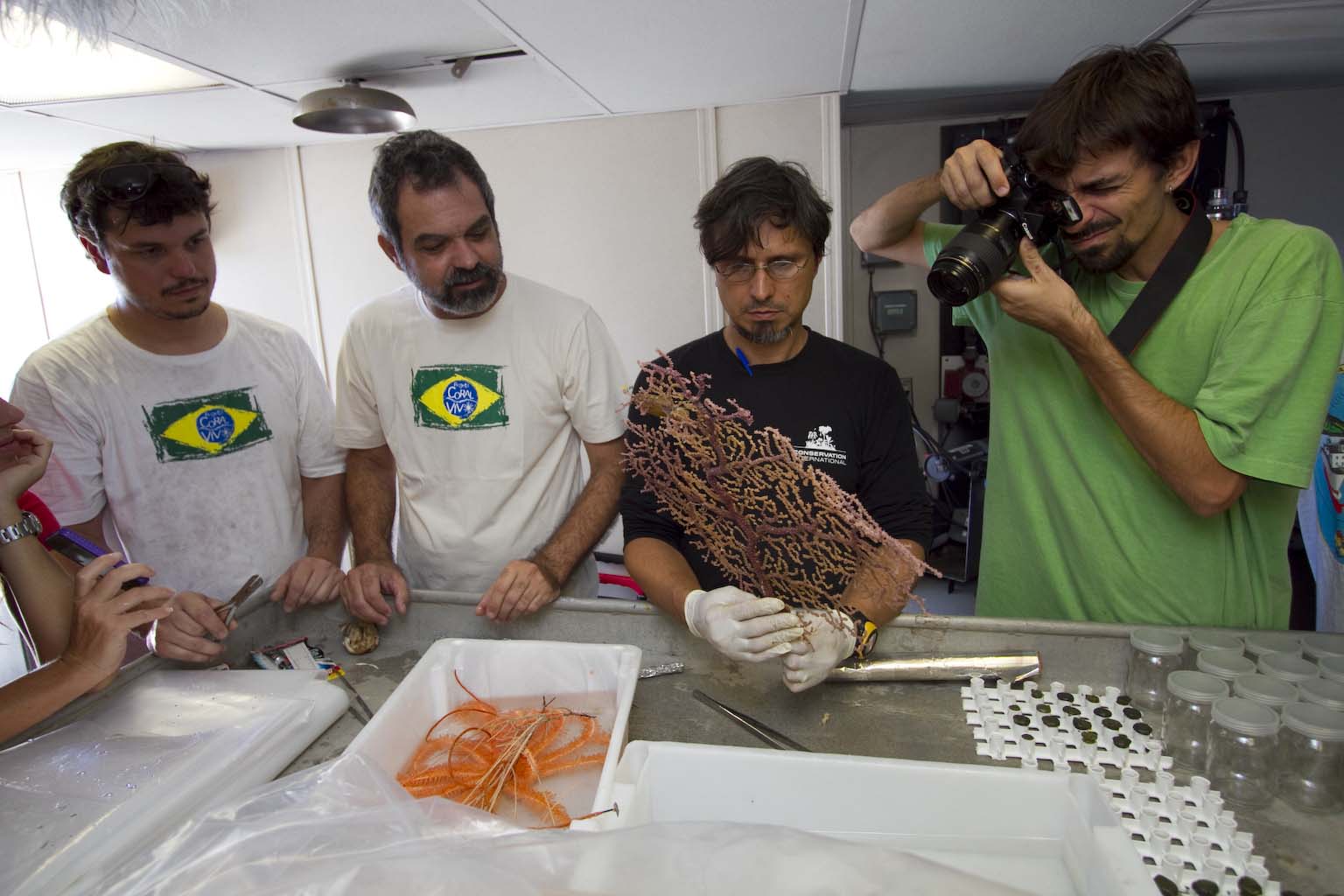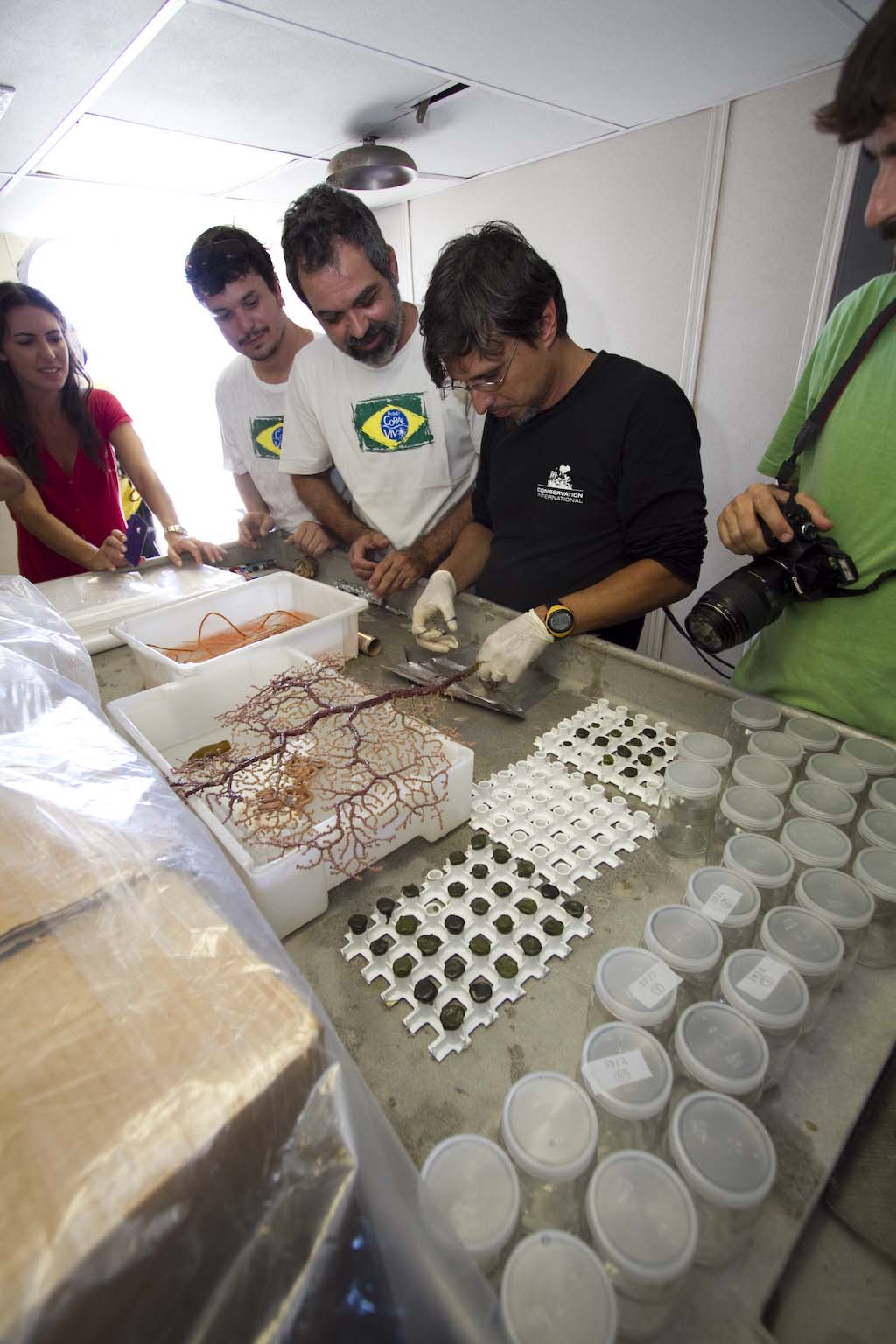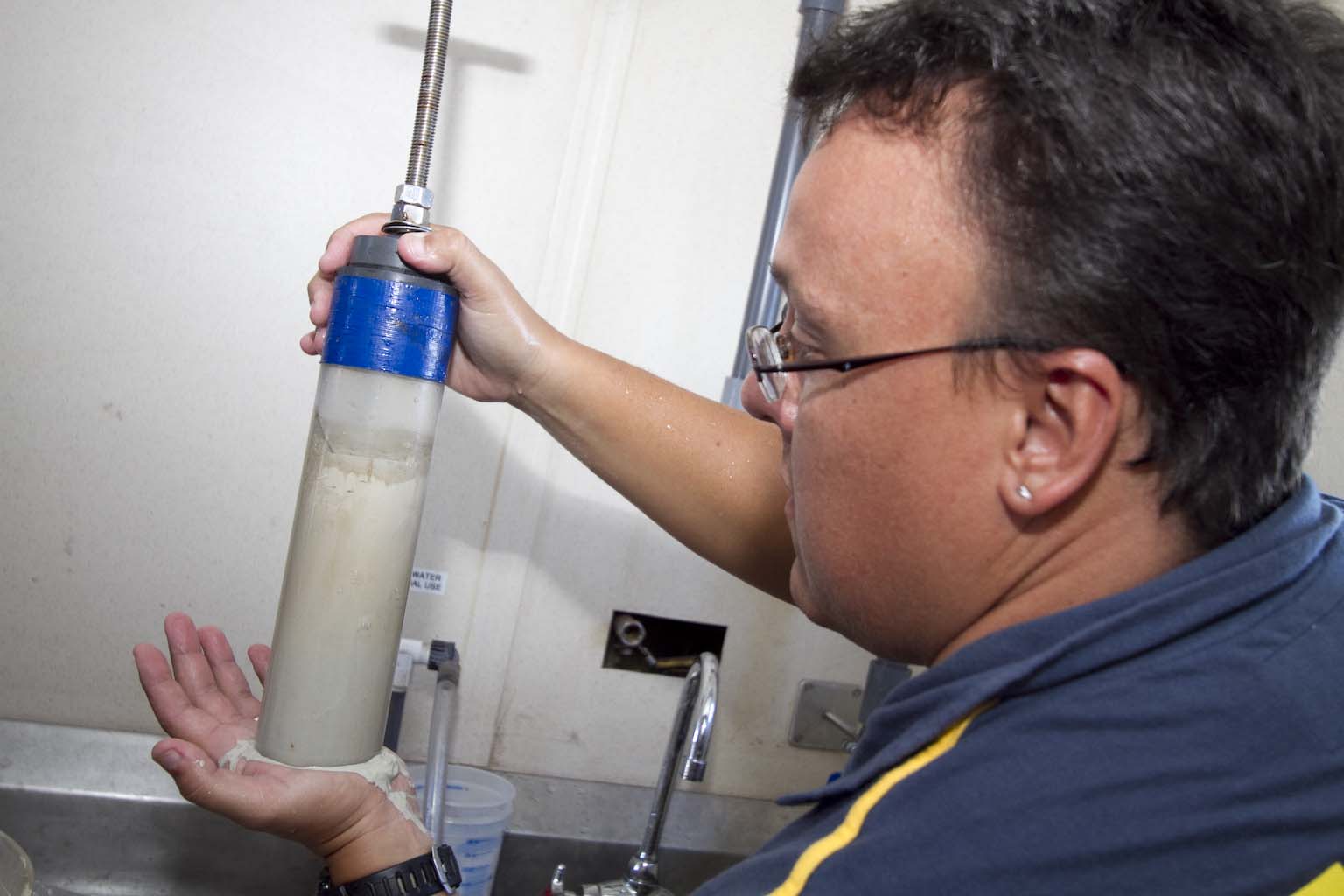 How deep can we go? How can we collect fish? How much water can we sample at once? These are just some of the questions that filled today’s planning session in Vitoria for the Abrolhos 2011 expedition. They’re not straightforward questions to which some resident authority has a simple answer. No, when you’re planning work between 300 and 3000 feet down, no questions are simple, and nor are the answers easy; rather, they are crafted through a careful group discussion of what’s a priority, what’s possible, what’s practical, and what we have time for. In other words, its not all The Life Aquatic, its large parts careful planning and preparation.
How deep can we go? How can we collect fish? How much water can we sample at once? These are just some of the questions that filled today’s planning session in Vitoria for the Abrolhos 2011 expedition. They’re not straightforward questions to which some resident authority has a simple answer. No, when you’re planning work between 300 and 3000 feet down, no questions are simple, and nor are the answers easy; rather, they are crafted through a careful group discussion of what’s a priority, what’s possible, what’s practical, and what we have time for. In other words, its not all The Life Aquatic, its large parts careful planning and preparation.
The day started with presentations from representatives of Cepemar, Harbor Branch and the Rosenstiel School of Marine Science at U. Miami. After that, Rodrigo Mouraled the planning session where we talked reef biology for hours, fueled (as all the best science chats are!) by shots of excellent Brazilian coffee. Dr. Moura is a faculty member at Santa Cruz University and a consulting scientist with Conservation International, who have a substantial marine conservation program focused at Abrolhos. He explained all the things that make Abrolhos unique, from the 40,000km2 platform on which they occur, to the unique fauna and dominance of shallower reefs by the endemic coral Mussismilia braziliensis, to the unusual mushroom formation of these reefs (chapeiroes), and finally to the history of human impacts and conservation efforts surrounding these unique ecosystems and the deeper and less-known seafloor habitats around them. The Abrolhos Marine National Park was the first marine national park in Brazil, established in 1983, but like many reefs it faces its fair share of threats from pollution, global climate change and marine development.
Suitably up to speed on the history and context for the expedition, the next speakers were the 8 principal investigators to give details of the motivations for their respective parts of the expedition, and to outline their specific sampling needs. Alex Bastos, a geologist from the Federal University of Espirito Santo, talked about the geological history of the platform, how its central depression was likely once a shallow coastal lagoon during the last ice age, and how taking samples of sediment from the bottom will explain more about how the reef came to be and how much it contributes to calcium carbonate production in that part of the Atlantic. Paulo Sumida from the University of São Paulo explained how organic matter (carbon based material either secreted from living organisms or leftover by dead ones) is distributed unevenly across the platform, with more in the south and less in the north. We learned from Mauricio Torronteguy’sgroup at Cepemar how water sampling and measurements of the properties of the water overlying the reef would be used to provide a better understanding of the biology taking place on the reef. Microbiologist and geneticist Fabiano Thompson from the Federal University of Rio de Janeiro explained what has been learned about the importance of Vibriobacteria on the reef, both as potential agents of disease in corals and, surprisingly, as possible agents of photosynthesis; i.e. food production from sunlight. Vibrios were not previously known to use light for food, so this is potentially big news. His graduate student, Nelson Alves, will be sampling for water-borne viruses by looking for their DNA signature. These aren’t viruses as we know them (causes of  A rhodolith bedhuman disease), but a natural and dominant part of the very smallest members of the plankton, whose importance has only been realized in the last few years. Gilberto Filho, who is a head botanist at the Botannic Gardens in Rio de Janeiro, talked about the importance of rhodolith beds, which are an unusual sort of habitat made up of softball-sized lumps of reddish rock that are produced by algae that are able to secrete calcium skeletons as they photosynthesise, much like corals do. These lumps then become substrate for all manner of other things to live on, since they are hard and rigid, unlike the soft, shifting sediments on which they sit. In this way, rhodoliths can increase the diversity of a patch of otherwise empty seabed. Ronaldo Francini-Filho talked about what is known and not known about some of the bigger critters that make up the reef community, like fish and larger invertebrates. The final presentations from National Museum scientist Clovis Castro and student Gustavo concerned deep-sea corals of the Abrolhos, including those that use light and have symbiotic algae in their tissues (zooxanthellate) and those that lack algae and feed by filtering plankton or absorbing organic material directly from seawater (azooxanthellate). We’ll learn more about each of these projects in coming days, so if you have questions for the researchers, by all means post them in the comments below.
A rhodolith bedhuman disease), but a natural and dominant part of the very smallest members of the plankton, whose importance has only been realized in the last few years. Gilberto Filho, who is a head botanist at the Botannic Gardens in Rio de Janeiro, talked about the importance of rhodolith beds, which are an unusual sort of habitat made up of softball-sized lumps of reddish rock that are produced by algae that are able to secrete calcium skeletons as they photosynthesise, much like corals do. These lumps then become substrate for all manner of other things to live on, since they are hard and rigid, unlike the soft, shifting sediments on which they sit. In this way, rhodoliths can increase the diversity of a patch of otherwise empty seabed. Ronaldo Francini-Filho talked about what is known and not known about some of the bigger critters that make up the reef community, like fish and larger invertebrates. The final presentations from National Museum scientist Clovis Castro and student Gustavo concerned deep-sea corals of the Abrolhos, including those that use light and have symbiotic algae in their tissues (zooxanthellate) and those that lack algae and feed by filtering plankton or absorbing organic material directly from seawater (azooxanthellate). We’ll learn more about each of these projects in coming days, so if you have questions for the researchers, by all means post them in the comments below.
The hardest part of planning a research trip came next: deciding how on earth we’re going to meet everyone’s needs within a limited timespan, using the assets of the ship and the brain trust of people aboard it. This is where the beautiful ideality of a proposed sampling scheme meets the stark and sometimes gruesome reality of what you can, practically speaking, actually do. All scientists, especially biologists, know and dread this bit; indeed,  Mmmmm…mesophotic reefs…argleargle….a lot of the very best biologists are those that have mastered this challenging process and can come up with intelligent and efficient sampling schemes that provide maximum bang for the research buck and minimize down or wasted time. The upside of this process is that as everyone thinks and talks, you start to see the days to come materializing before you, and a sense of very real excitement sets in. Ahead lie mornings spent deploying the submersible, afternoons sorting samples of sediment, deep sea corals and sponges, and evenings spent measuring water column properties with a CTD/Rosette and ADCP (more on these later). It’s enough to make any marine scientist practically drool with anticipation.
Mmmmm…mesophotic reefs…argleargle….a lot of the very best biologists are those that have mastered this challenging process and can come up with intelligent and efficient sampling schemes that provide maximum bang for the research buck and minimize down or wasted time. The upside of this process is that as everyone thinks and talks, you start to see the days to come materializing before you, and a sense of very real excitement sets in. Ahead lie mornings spent deploying the submersible, afternoons sorting samples of sediment, deep sea corals and sponges, and evenings spent measuring water column properties with a CTD/Rosette and ADCP (more on these later). It’s enough to make any marine scientist practically drool with anticipation.
 Sunday, February 20, 2011 at 8:34PM
Sunday, February 20, 2011 at 8:34PM  Post a Comment |
Post a Comment |  Email Article | tagged
Email Article | tagged  Abrolhos,
Abrolhos,  CEPEMAR,
CEPEMAR,  Georgia Aquarium,
Georgia Aquarium,  HBOI,
HBOI,  Submersible,
Submersible,  research
research 











